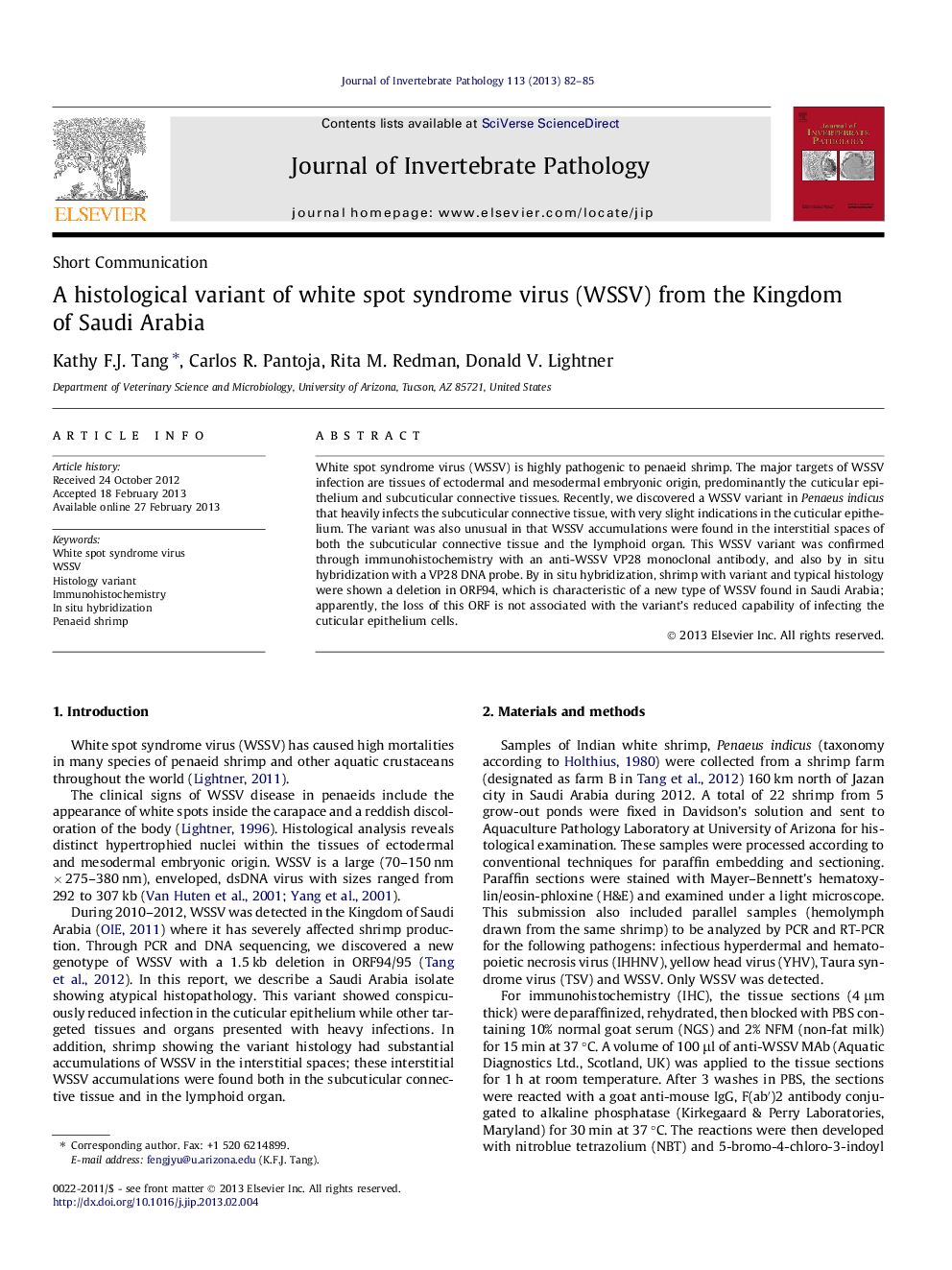| Article ID | Journal | Published Year | Pages | File Type |
|---|---|---|---|---|
| 4557841 | Journal of Invertebrate Pathology | 2013 | 4 Pages |
White spot syndrome virus (WSSV) is highly pathogenic to penaeid shrimp. The major targets of WSSV infection are tissues of ectodermal and mesodermal embryonic origin, predominantly the cuticular epithelium and subcuticular connective tissues. Recently, we discovered a WSSV variant in Penaeus indicus that heavily infects the subcuticular connective tissue, with very slight indications in the cuticular epithelium. The variant was also unusual in that WSSV accumulations were found in the interstitial spaces of both the subcuticular connective tissue and the lymphoid organ. This WSSV variant was confirmed through immunohistochemistry with an anti-WSSV VP28 monoclonal antibody, and also by in situ hybridization with a VP28 DNA probe. By in situ hybridization, shrimp with variant and typical histology were shown a deletion in ORF94, which is characteristic of a new type of WSSV found in Saudi Arabia; apparently, the loss of this ORF is not associated with the variant’s reduced capability of infecting the cuticular epithelium cells.
Graphical abstractH&E histology and immunohistochemistry (IHC) of WSSV-infected Penaeus indicus showing reduced infection in the cuticular epithelum (Cep); interstitial WSSV accumulations (IWA) were found in subcuticular connective tissue (sCn).Figure optionsDownload full-size imageDownload as PowerPoint slideHighlights► A WSSV histology variant was found in Penaeus indicus from Saudi Arabia. ► Atypical histology included a slight infection in cuticular epithelium. ► Interstitial WSSV accumulations in subcutis connective tissue and lymphoid organ. ► Immunohistochemistry and in situ hybridization confirm the presence of WSSV.
